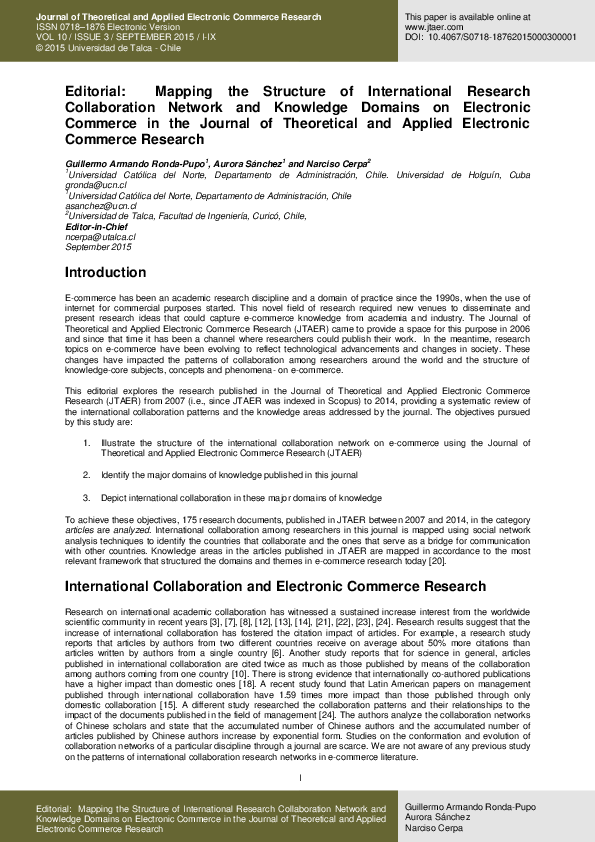直邮还是保税仓库?汇率风险下的跨境电子商务物流模式选择
IF 4.6
3区 管理学
Q1 BUSINESS
Journal of Theoretical and Applied Electronic Commerce Research
Pub Date : 2024-09-06
DOI:10.3390/jtaer19030112
引用次数: 0
摘要
跨境电子商务(CBEC)的快速发展使更多的供应商得以拓展海外市场,满足日益多样化的消费需求。选择有效的物流模式是供应商面临的关键问题,然而需求的不确定性和汇率的波动使这一问题充满挑战。本文研究了由供应商和 CBEC 平台组成的供应链。在给定市场需求和汇率的部分分布信息(如均值、方差和协方差)的情况下,我们采用分布稳健优化方法,为供应商提供了最优海外仓储策略和物流模式选择。研究发现,当需求和汇率波动较小时,供应商选择保税仓库物流模式以降低成本。相反,当需求和汇率波动增大时,供应商会选择直邮模式,以灵活应对市场风险。汇率与需求之间的相关性也会影响物流模式的选择。具体来说,相关性低时,供应商更倾向于保税仓库模式,而相关性高时,供应商会选择直邮模式。此外,需求和汇率波动对供应商海外仓储量的影响取决于产品的利润率。这些研究结果为在汇率风险下选择 CBEC 物流提供了指导。本文章由计算机程序翻译,如有差异,请以英文原文为准。
Direct Mail or Bonded Warehouse? Logistics Mode Selection in Cross-Border E-Commerce under Exchange Rate Risk
The rapid development of cross-border e-commerce (CBEC) has enabled more suppliers to expand into overseas markets, meeting increasingly diverse consumer demands. Selecting an effective logistics mode is a crucial issue for suppliers, yet uncertainty in demand and exchange rate fluctuations make this problem challenging. This paper considers a supply chain consisting of a supplier and a CBEC platform. Using a distributionally robust optimization approach, we provide optimal overseas warehousing strategies and logistics mode selection for suppliers, given partial distribution information of market demand and exchange rate, such as means, variances, and covariances. It is found that when demand and exchange rate fluctuations are small, the supplier chooses the bonded warehouse logistics mode to reduce costs. Conversely, when demand and exchange rate fluctuations increase, the supplier opts for the direct mail mode to respond flexibly to market risk. The correlation between exchange rate and demand also affects the choice of logistics mode. Specifically, with low correlation, the preference is for the bonded warehouse mode, whereas high correlation leads suppliers to choose the direct mail mode. In addition, the impact of demand and exchange rate fluctuations on suppliers’ overseas warehousing volumes depends on the product’s profit margin. These findings provide guidance for the selection of CBEC logistics under exchange rate risk.
求助全文
通过发布文献求助,成功后即可免费获取论文全文。
去求助
来源期刊
CiteScore
9.50
自引率
3.60%
发文量
67
期刊介绍:
The Journal of Theoretical and Applied Electronic Commerce Research (JTAER) has been created to allow researchers, academicians and other professionals an agile and flexible channel of communication in which to share and debate new ideas and emerging technologies concerned with this rapidly evolving field. Business practices, social, cultural and legal concerns, personal privacy and security, communications technologies, mobile connectivity are among the important elements of electronic commerce and are becoming ever more relevant in everyday life. JTAER will assist in extending and improving the use of electronic commerce for the benefit of our society.

 求助内容:
求助内容: 应助结果提醒方式:
应助结果提醒方式:


